Testing of Piezo-Actuated Glass Micro-Membranes by Optical Low-Coherence Reflectometry
Abstract
:1. Introduction
2. Measuring Setup and Piezo-Actuated Glass Micro-Membrane
3. Results
3.1. Micro-Membrane Optical Path-Length
3.2. Micro-Membrane Displacement Induced by Quasi-Static Piezo-Actuation
3.3. Resonance Curve of the Fundamental Out-of-Plane Vibration Mode
4. Conclusions
Acknowledgments
Author Contributions
Conflicts of Interest
References
- Polla, D.L.; Francis, L.F. Processing and characterization of piezoelectric materials and integration into microelectromechanical systems. Annu. Rev. Mater. Sci. 1998, 28, 563–597. [Google Scholar] [CrossRef]
- Brunahl, J.; Grishin, A.M. Piezoelectric shear mode drop-on-demand inkjet actuator. Sens. Actuators A Phys. 2002, 101, 371–382. [Google Scholar] [CrossRef]
- Baran, U.; Brown, D.; Holmstrom, S.; Balma, D.; Davis, W.O.; Muralt, P.; Urey, H. Resonant PZT MEMS scanner for high-resolution displays. J. Microelectromech. Syst. 2012, 21, 1303–1310. [Google Scholar] [CrossRef]
- Wong, C.W.; Jeon, Y.; Barbastathis, G.; Kim, S.-G. Analog piezoelectric-driven tunable gratings with nanometer resolution. J. Microelectromech. Syst. 2004, 13, 998–1005. [Google Scholar] [CrossRef]
- Guerre, R.; Drechsler, U.; Bhattacharyya, D.; Rantakari, P.; Stutz, R.; Wright, R.V.; Despont, M. Wafer-level transfer technologies for PZT-based RF MEMS switches. J. Microelectromech. Syst. 2010, 19, 548–560. [Google Scholar] [CrossRef]
- Proie, R.; Polcawich, R.; Pulskamp, J.; Ivanov, T.; Zaghloul, M. Development of a PZT MEMS switch architecture for low-power digital applications. J. Microelectromech. Syst. 2011, 20, 1032–1042. [Google Scholar] [CrossRef]
- Stürmer, M.; Schatz, A.; Wallrabe, U. Cylindrical lens with integrated piezo actuation for focal length tuning and lateral Scanning. In Proceedings of the 2014 IEEE 27th International Conference on Micro Electro Mechanical Systems (MEMS), San Francisco, CA, USA, 26–30 January 2014; pp. 1171–1174.
- Michael, A.; Chen, S.H.; Kwok, C.Y. Design, fabrication and testing of piezo-electric driving mechanism for micro-optics. In Proceedings of the 2015 Transducers—18th International Conference on Solid-State Sensors, Actuators and Microsystems (TRANSDUCERS), Anchorage, AK, USA, 21–25 June 2015; pp. 2101–2104.
- Wallrabe, U. Axicons et al.—Highly aspherical adaptive optical elements for the life sciences. In Proceedings of the 2015 Transducers—18th International Conference on Solid-State Sensors, Actuators and Microsystems (TRANSDUCERS), Anchorage, AK, USA, 21–25 June 2015; pp. 251–256.
- Henriksen, L.; Eliassen, M.; Kartashov, V.; Ulvensoen, J.H.; Johansen, I.-R.; Haugholt, K.H.; Wang, D.T.; Tyholdt, F.; Booij, W. Flexible Lens Assembly with Variable Focal Length. U.S. Patent 8,390,939, 5 March 2013. [Google Scholar]
- Henriksen, L.; Eliassen, M.; Kartashov, V.; Ulvensoen, J.H.; Johansen, I.-R.; Haugholt, K.H.; Wang, D.T.; Tyholdt, F.; Booij, W. Method for Manyfacturing Adjustable Lens. U.S. Patent 8,883,019, 11 November 2014. [Google Scholar]
- Rembe, C.; Kant, R.; Muller, R.S. Optical measurement methods to study dynamic behavior in MEMS. In Proc. SPIE 2001, 4400. [Google Scholar] [CrossRef]
- Guo, T.; Ma, L.; Bian, Y. MEMS Characterization Based on Optical Measuring Methods. In Microelectromechanical Systems and Devices; Nazmul, I., Ed.; InTech: New York, NY, USA, 2012; Available online: http://www.intechopen.com/books/microelectromechanical-systems-and-devices/mems-characterization-based-on-optical-measuring-methods (accessed on 20 December 2016).
- Mazzalai, A.; Balma, D.; Chidambaram, N.; Matloub, R.; Muralt, P. Characterization and fatigue of the converse piezoelectric effect in PZT films for MEMS applications. J. Microelectromech. Syst. 2015, 24, 831–838. [Google Scholar] [CrossRef]
- Annovazzi-Lodi, V.; Merlo, S.; Norgia, M.; Spinola, G.; Vigna, B.; Zerbini, S. Optical detection of the Coriolis force on a silicon micromachined gyroscope. J. Microelectromech. Syst. 2003, 12, 540–549. [Google Scholar] [CrossRef]
- Annovazzi-Lodi, V.; Benedetti, M.; Merlo, S.; Norgia, M. Spot optical measurements on micromachined mirrors for photonic switching. IEEE J. Sel. Top. Quantum Electron. 2004, 10, 536–544. [Google Scholar] [CrossRef]
- Merlo, S.; Annovazzi-Lodi, V.; Benedetti, M.; Carli, F.; Norgia, M. Testing of ‘Venetian-Blind’ Silicon Microstructures with Optical Methods. J. Microelectromech. Syst. 2006, 15, 588–596. [Google Scholar] [CrossRef]
- Silva, G.; Carpignano, F.; Merlo, S. Optical detection of the electromechanical response of MEMS micromirrors designed for scanning picoprojectors. IEEE J. Sel. Top. Quantum Electron. 2015, 21. [Google Scholar] [CrossRef]
- Palmieri, M. Microfluidic Jetting Device with Piezoelectric Actuator and Method for Making the Same. U.S. Patent 8,727,504, 20 May 2014. [Google Scholar]
- Cattaneo, M.; Campedelli, R.; Varisco, I. Method for Manufacturing a Fluid Ejection Device and Fluid Ejection Device. U.S. Patent 8,998,388, 7 April 2015. [Google Scholar]
- Doe, P. What’s Next for MEMS Technology. MEMS Trends 2013, 10, 8–11. [Google Scholar]
- Carpignano, F.; Rigamonti, G.; Merlo, S. Characterization of rectangular glass micro-capillaries by low-coherence reflectometry. IEEE Photonics Technol. Lett. 2015, 27, 1064–1067. [Google Scholar] [CrossRef]
- Carpignano, F.; Surdo, S.; Barillaro, G.; Merlo, S. Silicon micromachined device testing by infrared low-coherence reflectometry. J. Microelectromech. Syst. 2015, 24, 1960–1964. [Google Scholar] [CrossRef]
- Sassella, A.; Borghesi, A.; Rojas, S.; Zanotti, L. Optical properties of CVD-deposited dielectric films for microelectronic devices. J. Phys. IV 1995, 5, C5_843–C5_859. [Google Scholar] [CrossRef]
- Feth, H.; Esch, M.; Mueller, C.; Thoma, F.; Biancuzzi, G.; Lemke, T.; Goldschmidtboeing, F.; Woias, P. Design and characterization of a low-voltage piezoelectrically actuated polymer membrane. In Proceedings of the 16th International Conference on Solid-State Sensors, Actuators and Microsystems (TRANSDUCERS), Beijing, China, 5–9 June 2011; pp. 470–473.
- Feth, H.; Pothof, F.; Thoma, F.; Schmidt, T.; Mueller, C.; Goldschmidtboeing, F. Design, fabrication and characterization of a piezoelectrically actuated bidirectional polymer micropump. Microsyst. Technol. 2014, 20, 1299–1310. [Google Scholar] [CrossRef]
- Jin, T.; Takita, A.; Djamal, M.; Hou, W.; Jia, H.; Fujii, Y.A. Method for evaluating the electro-mechanical characteristics of piezoelectric actuators during motion. Sensors 2012, 12, 11559–11570. [Google Scholar] [CrossRef]
- Carpignano, F.; Rigamonti, G.; Mazzini, G.; Merlo, S. Low-coherence reflectometry for refractive index measurements of cells in micro-capillaries. Sensors 2016, 16, 1670. [Google Scholar] [CrossRef] [PubMed]
- Nanthakumar, S.S.; Lahmer, T.; Zhuang, X.; Zi, G.; Rabczuk, T. Detection of material interfaces using a regularized level set method in piezoelectric structures. Inverse Probl. Sci. Eng. 2016, 24, 153–176. [Google Scholar] [CrossRef]
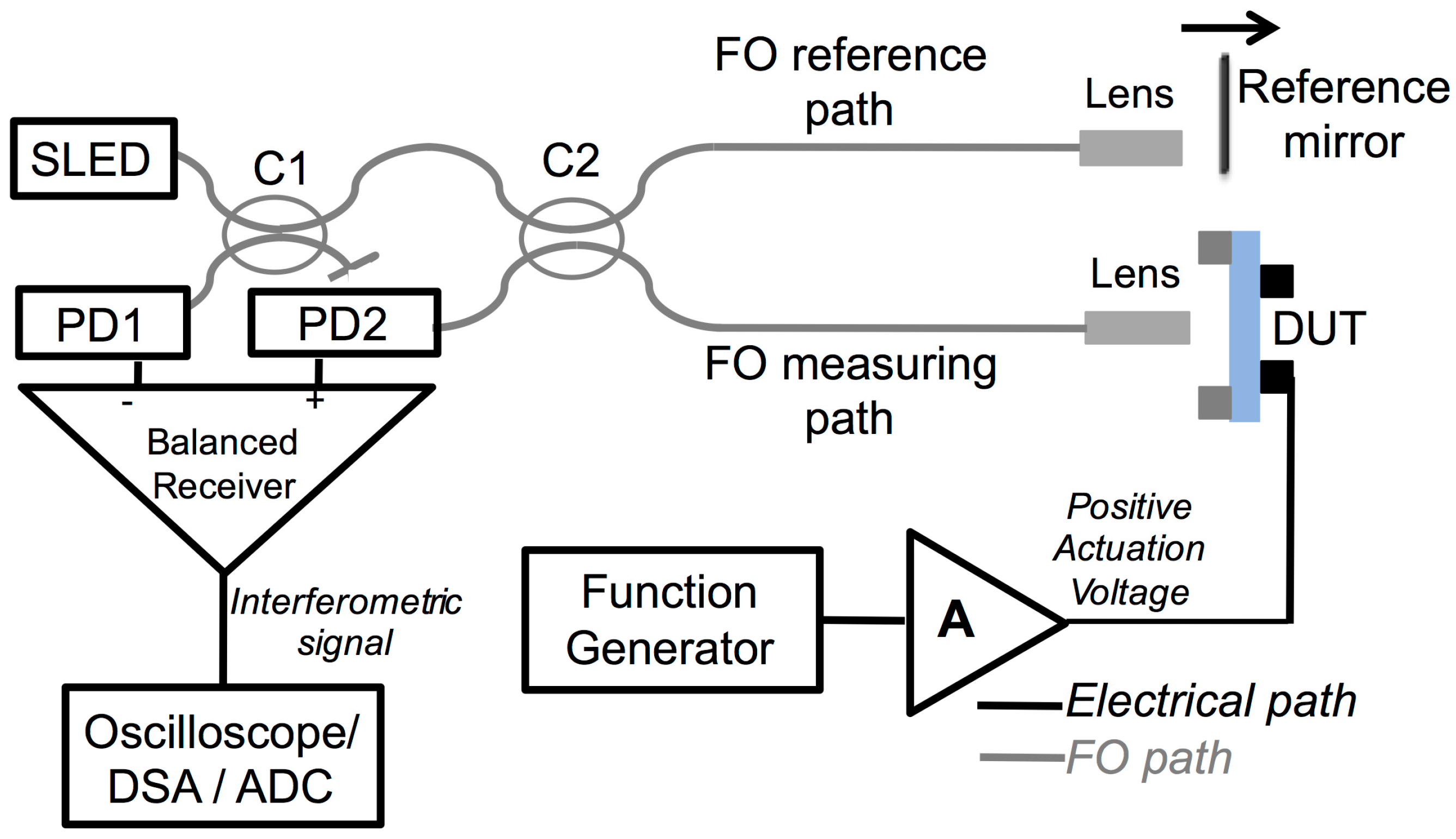
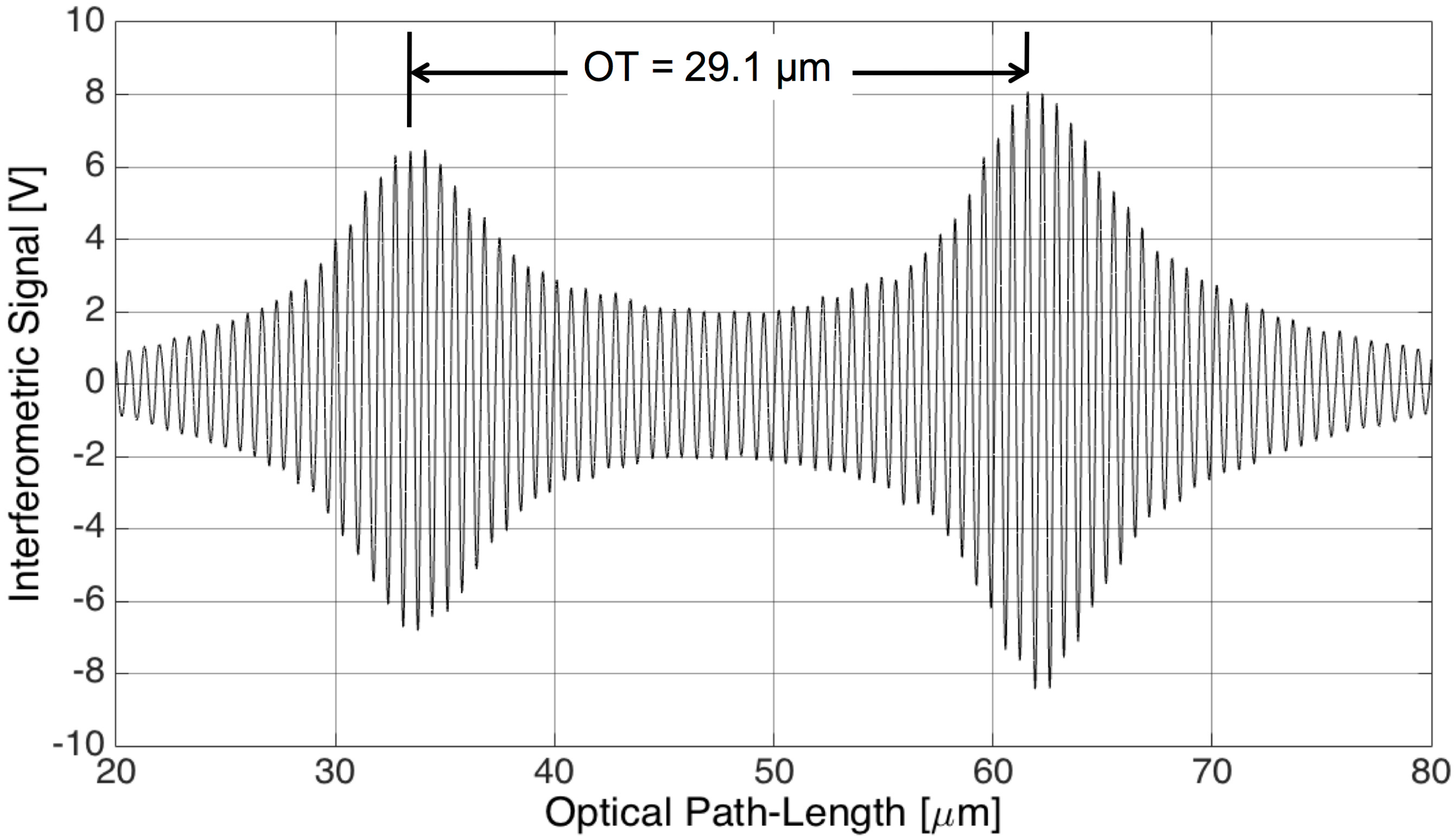
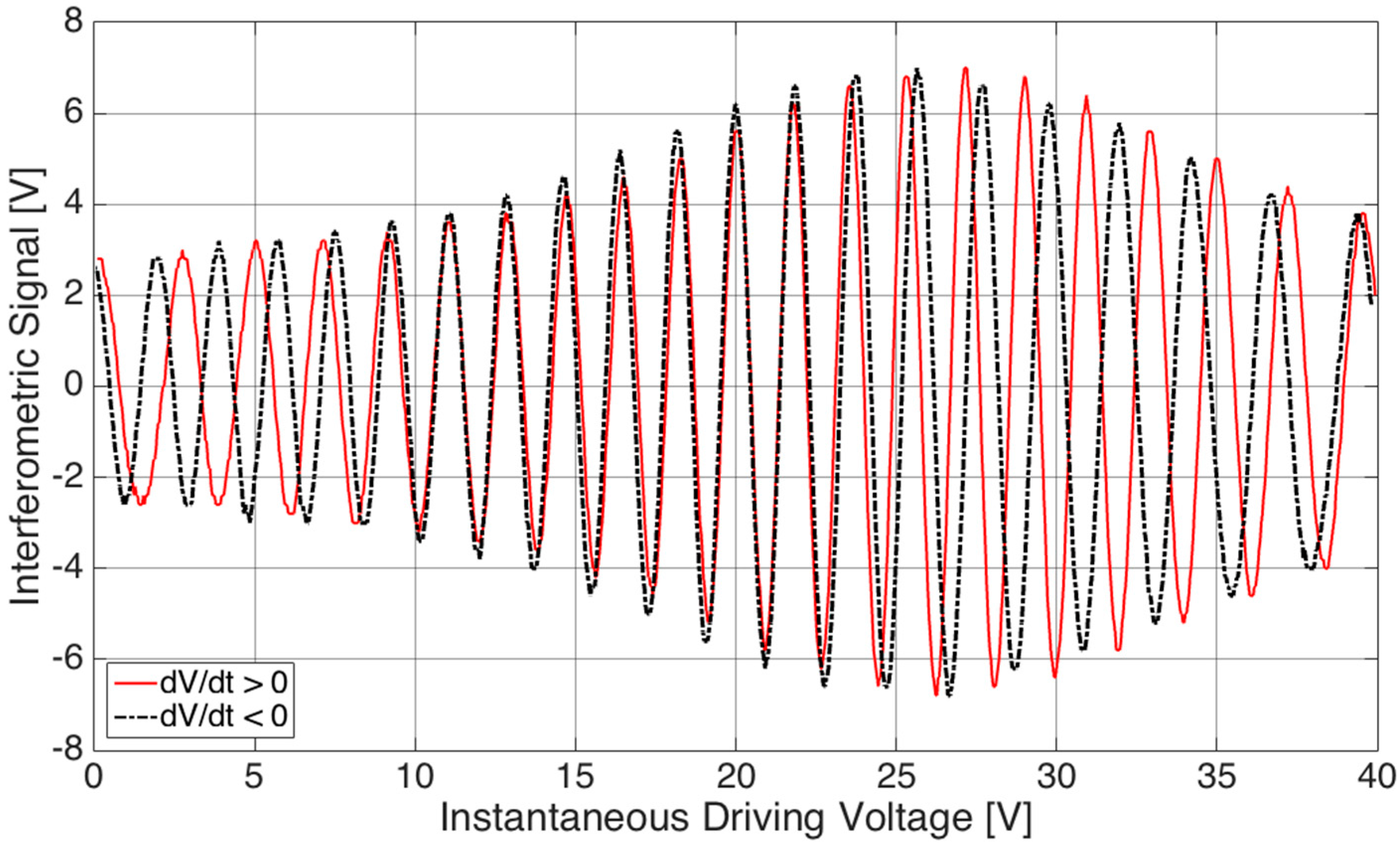
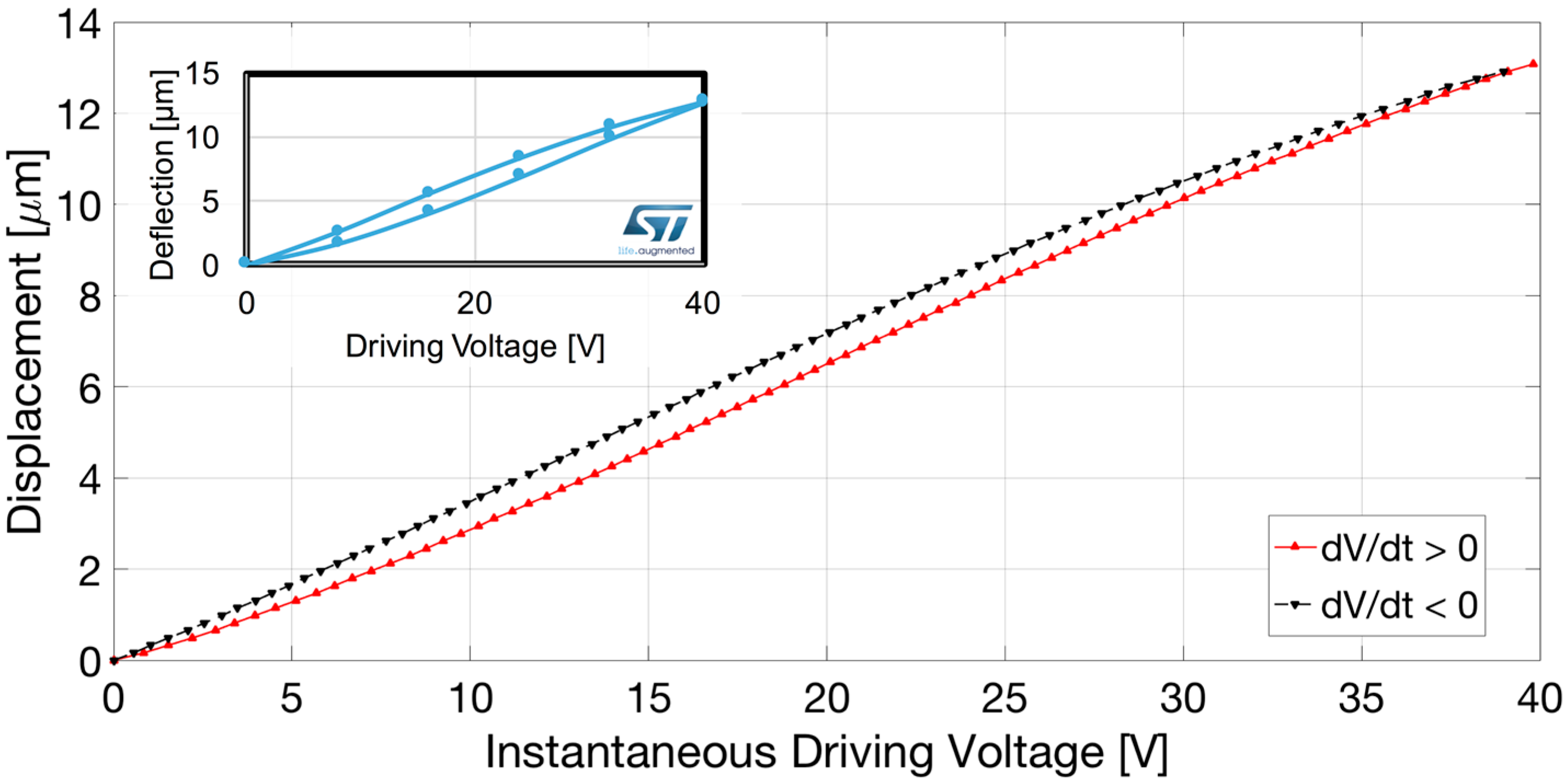
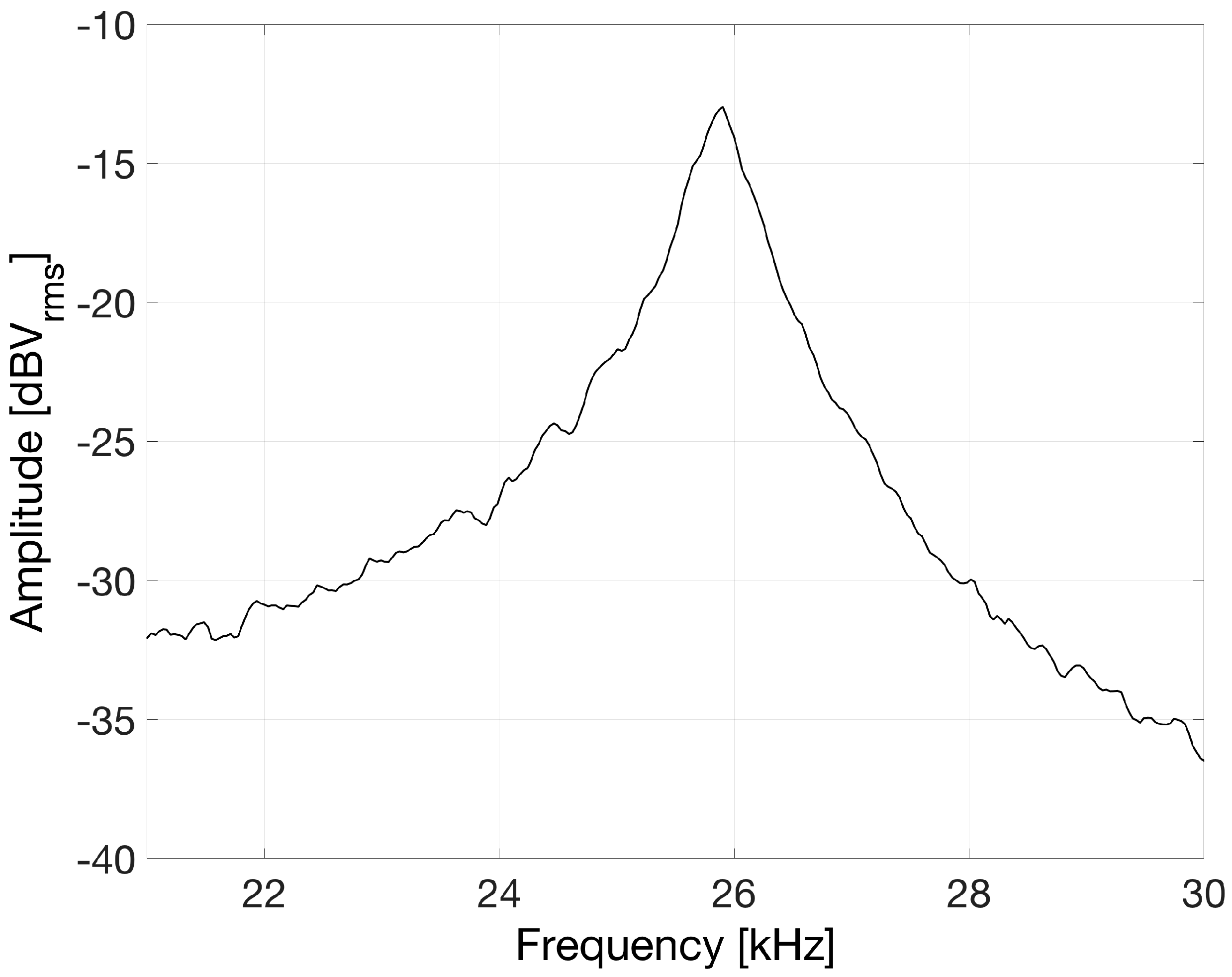
© 2017 by the authors. Licensee MDPI, Basel, Switzerland. This article is an open access article distributed under the terms and conditions of the Creative Commons Attribution (CC BY) license ( http://creativecommons.org/licenses/by/4.0/).
Share and Cite
Merlo, S.; Poma, P.; Crisà, E.; Faralli, D.; Soldo, M. Testing of Piezo-Actuated Glass Micro-Membranes by Optical Low-Coherence Reflectometry. Sensors 2017, 17, 462. https://doi.org/10.3390/s17030462
Merlo S, Poma P, Crisà E, Faralli D, Soldo M. Testing of Piezo-Actuated Glass Micro-Membranes by Optical Low-Coherence Reflectometry. Sensors. 2017; 17(3):462. https://doi.org/10.3390/s17030462
Chicago/Turabian StyleMerlo, Sabina, Paolo Poma, Eleonora Crisà, Dino Faralli, and Marco Soldo. 2017. "Testing of Piezo-Actuated Glass Micro-Membranes by Optical Low-Coherence Reflectometry" Sensors 17, no. 3: 462. https://doi.org/10.3390/s17030462





